Pay more and live in peace. Features of tuning the updated HyperX FURY DDR4 memory on the Intel Z390 platform
In the previous article, we explored the capabilities of two HyperX memory kits by testing them on the latest AMD X570 platform. A few months remain before the 400th series of Intel chipsets and, accordingly, motherboards based on them, but the Z390 is still in operation. Today we are not talking about a direct comparison of the capabilities of processors or chipsets, but about the features of their work with RAM and its tuning to achieve maximum performance.

If any of you has studied the RAM market at least once, you immediately noticed that an increase in the clock frequency of the modules entails a noticeable increase in cost. This is especially evident at frequencies above 4000 MHz, when an extra hundred megahertz can cost more than 5000 rubles. Therefore, only inveterate enthusiasts can afford to purchase kits with frequencies of 4400 MHz and higher. Moreover, there were some pitfalls here.
It was possible to achieve stable operation of high-frequency memory modules on the AMD platform only this year - with the release of Ryzen 3000 processors. And even then there were some features that we spoke about in detail earlier. With Intel processors, everything is much simpler, although there are some nuances. For example, not all motherboards and processors can work with memory clocked at 4400 MHz or higher. Here you need not only an advanced motherboard, but also a selected processor. But up to 4400 MHz, many boards and almost all processors “can”. So Intel’s success formula is simple - money + money + more money and some luck or processor selection.
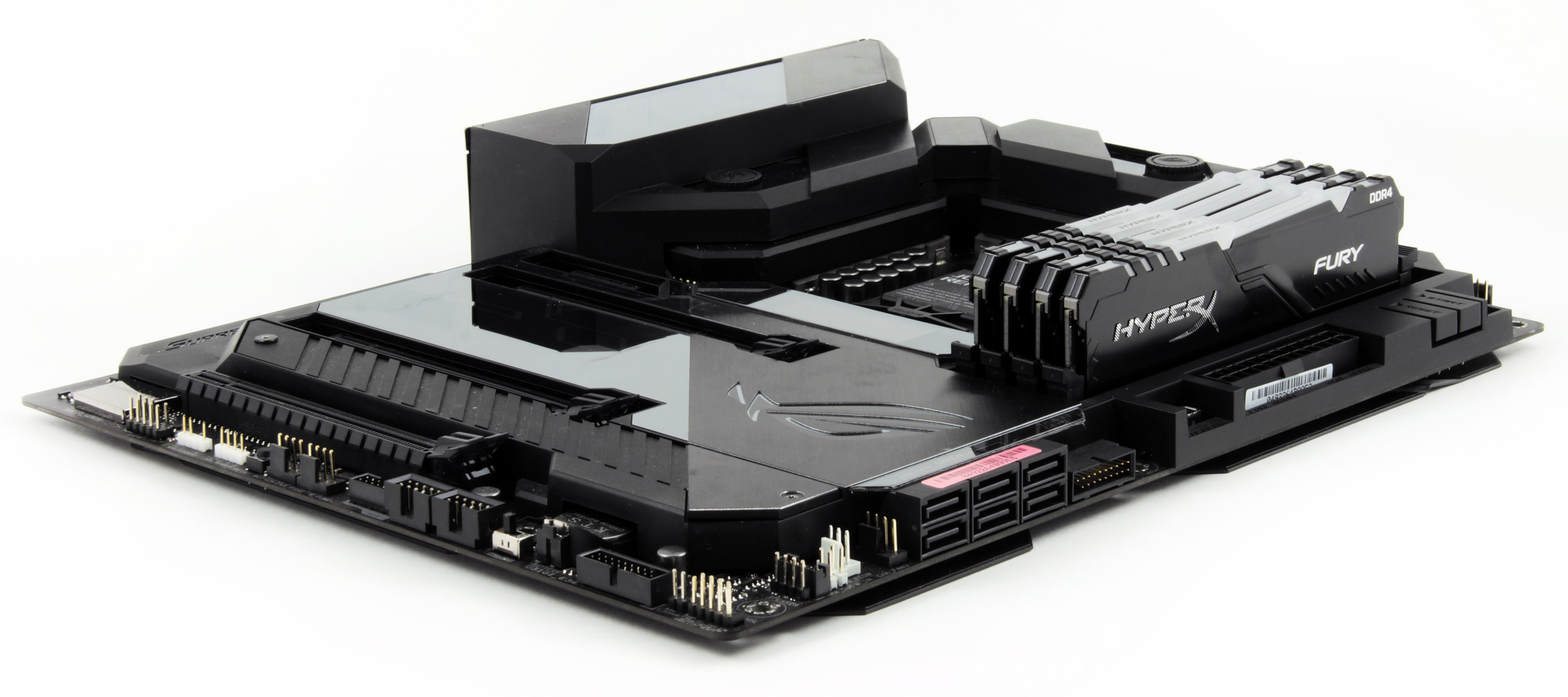
Everyone decides for himself. But with the Intel platform, handling memory is much simpler - no need to think about the FCLK to memory frequency ratios; you don’t need to study a large amount of memory materials to find suitable modules; do not read dozens and hundreds of pages of forums in order to understand if there are any problems with one or another bundle of memory-board. We already know that in the thoughts of some of you, this material looks like "just spend a lot of money and everything will work." But it is not so. After all, with the Intel platform, no one canceled overclocking of memory. Not only that, it's even easier to do than with AMD. That is, to save on memory, nevertheless, it is possible. But, as in the case with AMD, you need to choose the "right" modules.
Finally, we move on to the study of two new sets of HyperX memory - Fury DDR4 RGB with a capacity of 64 GB and Fury DDR4 with a capacity of 32 GB, which, by the way, are far from the most expensive and even vice versa - one of the most affordable. Yes, these are the same kits that we used when testing with AMD.
HyperX Fury DDR4 RGB memory codenamed HX430C15FB3AK4 / 64 implies four modules with a capacity of 16 GB each with a clock frequency of 3000 MHz and CL15 timings (if fully - 15-17-17-36), operating at a voltage of 1.35 V. This memory is offered in different versions - in the form of separate modules (8 or 16 GB), as well as in the form of sets of two or four modules. The clock frequency varies from 2400 MHz to 3466 MHz, depending on the kit.
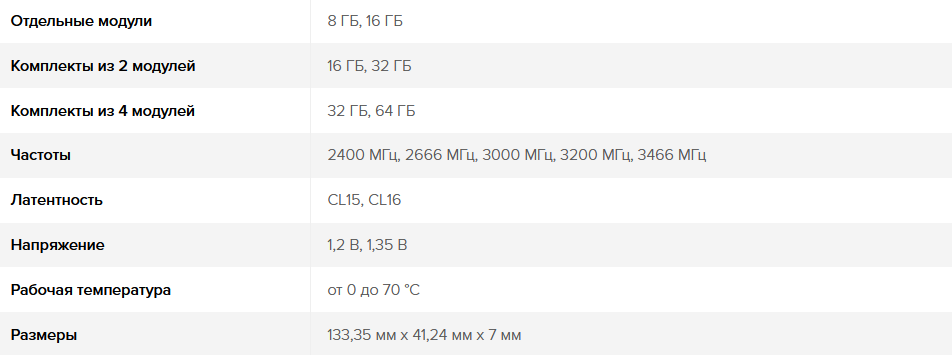
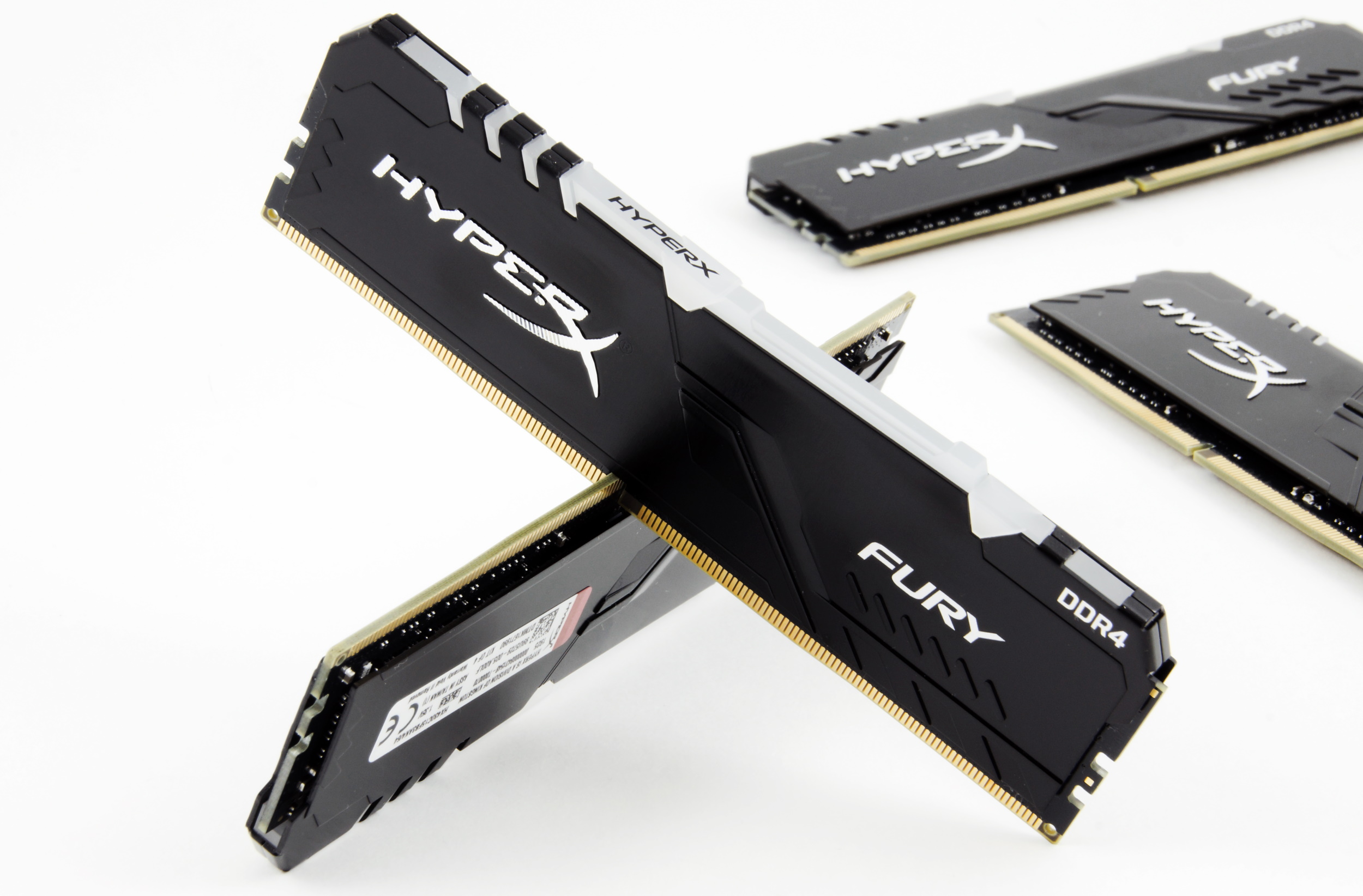
The key design feature is not so much the presence of the backlight itself, but its capabilities. These modules support Infrared Sync technology. It is based on a set of infrared sensors located on a printed circuit board on both sides of it near the pads.

If in normal operation the backlight of all modules works absolutely synchronously ...
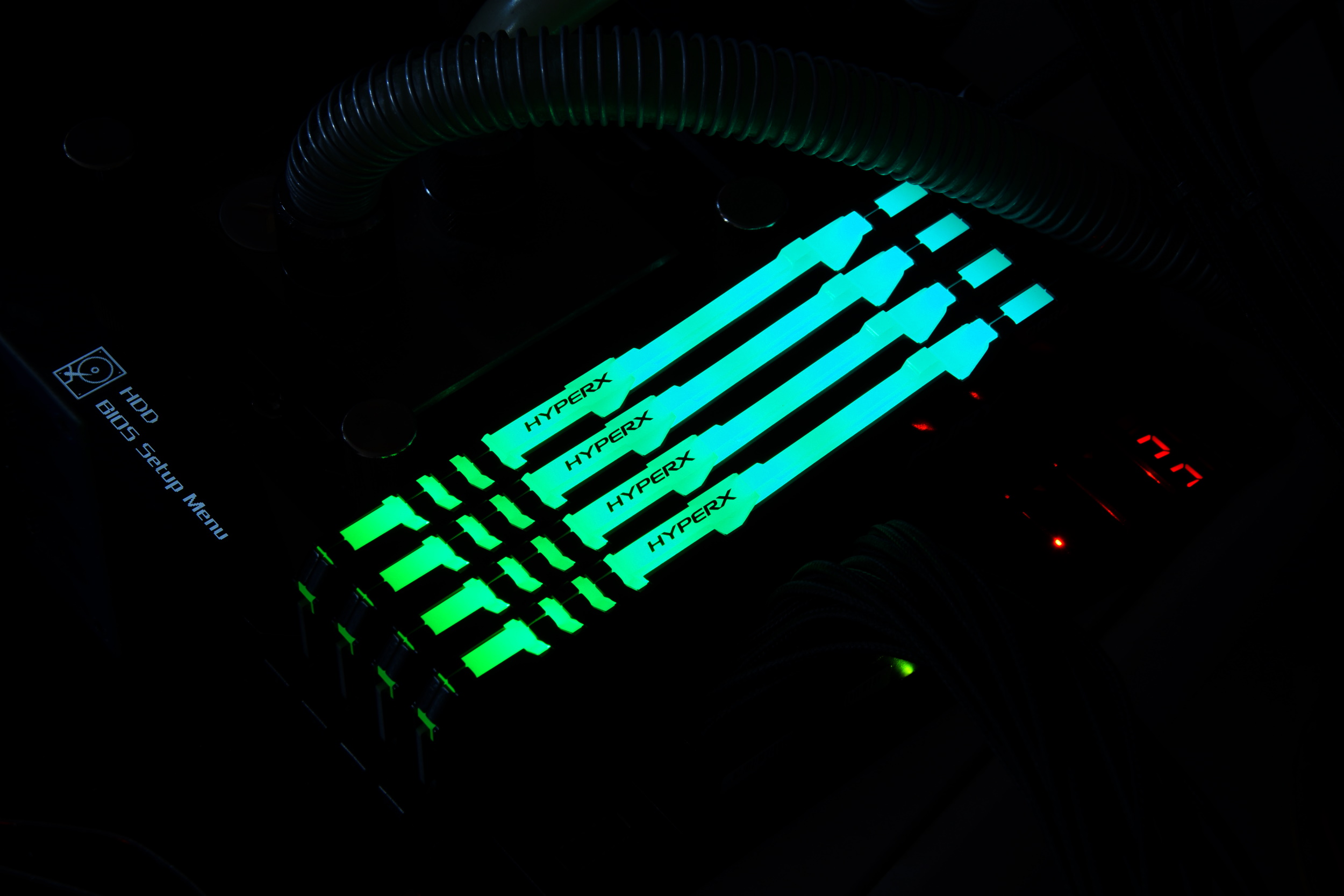
Then, if you interrupt the connection between them in any way, then synchronization will not work:

As we already said, in our hands is a memory kit with a clock frequency of 3000 MHz. It is based on Hynix's C-die chips. It’s a pity that it’s not B-die, but there is hope for a good overclocking.

Of course, from the first start-up with an activated XMP profile, the system boots correctly.

For several reboots, we determine a reasonable ceiling for this kit - so that there is a safe voltage, adequate timings and stable operation. As a result - 3600 MHz at 16-18-18-36 against the standard 15-17-17-36. You don’t need any calculators or similar research - a simple performance increase is provided immediately. Yes, not everywhere - in games, perhaps, there will be no difference. But in professional applications that actively use RAM, the increase will be immediately noticeable.

Let's start with a simple one - read, write, copy and delay indicators in the AIDA64 integrated benchmark. The results are expected, no surprises.

Although we increased the timings, the clock frequency did its job - the delay decreased slightly.
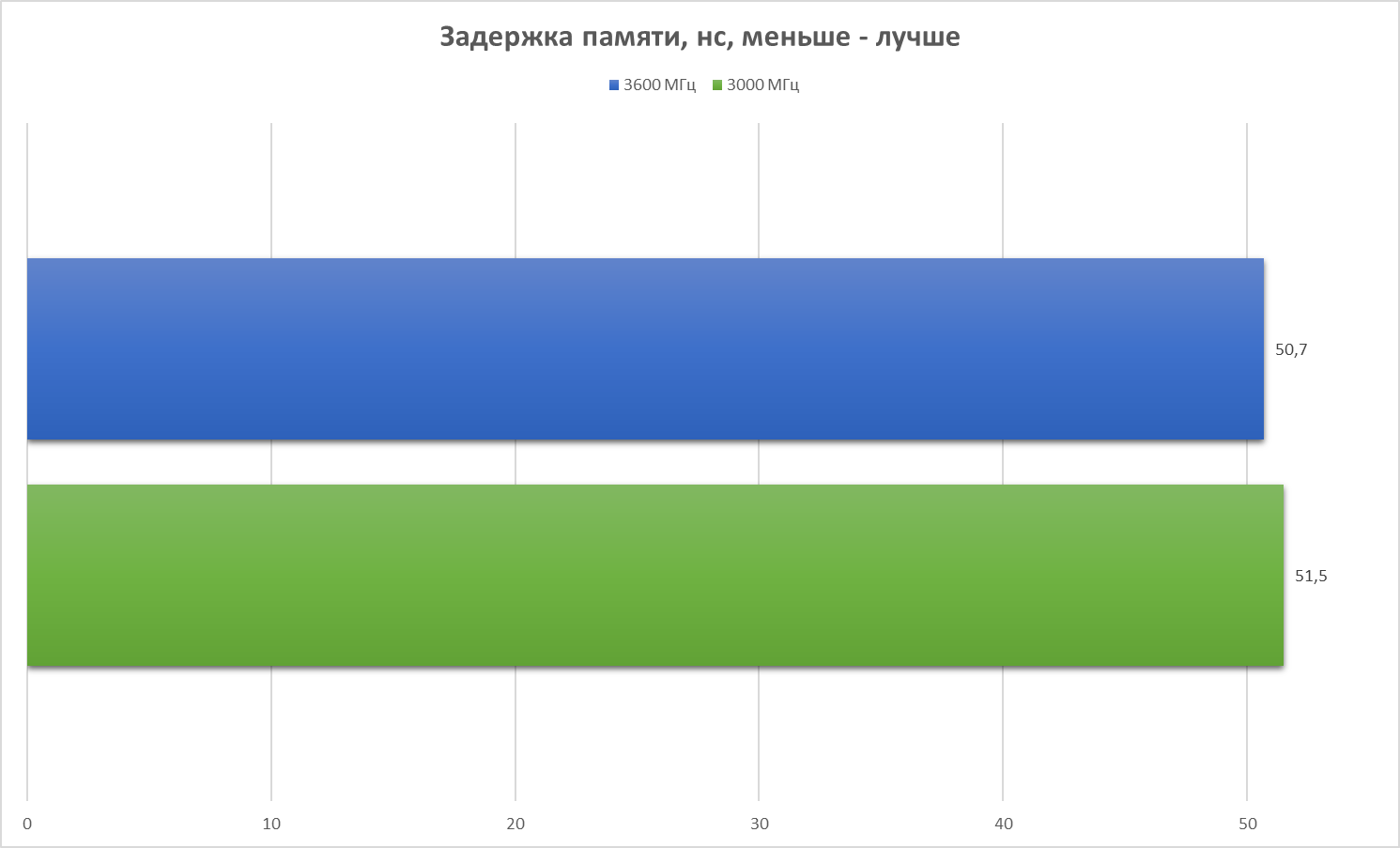
When converting hundreds of photos from RAW to JPEG using Capture One, the increase is noticeable, although not very large.
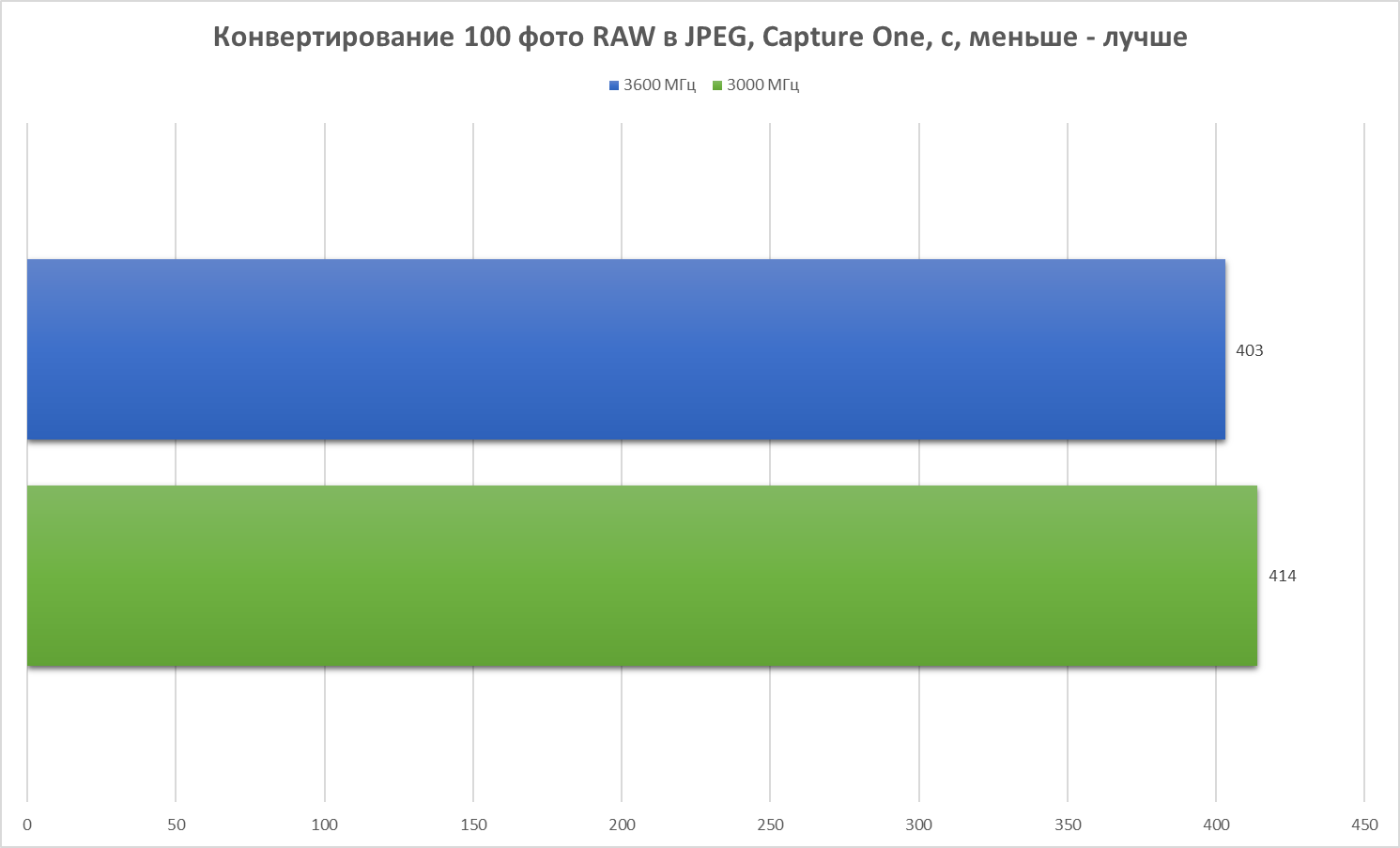
Now move on to great professional programs. First, add the grain effect to a 4K movie lasting 10 minutes with Adobe Premiere Pro. Task execution time is indicated in seconds. There is a gain, although not very large.

Some increase in the speed of task execution can be seen in After Effects from the same Adobe - here overclocking the memory allows you to achieve quite noticeable speedup.

But here's where, and in SideFx's Houdini FX, the gain from overclocking is significant. Please note that the numbers are minutes. That is, the result is impressive, isn't it?
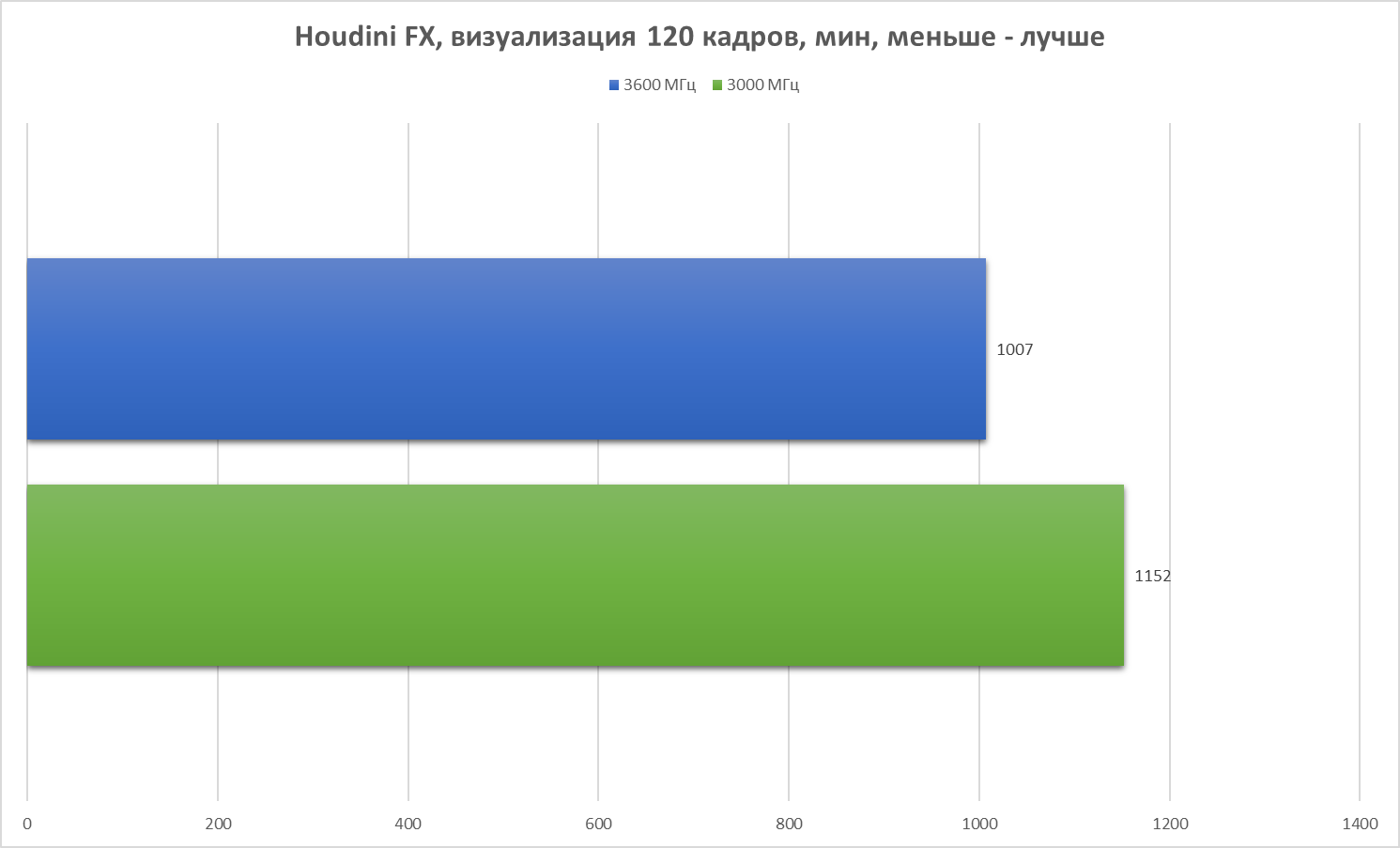
As for games, the results can vary greatly depending on the game. Somewhere there will be no difference, somewhere the minimum and average number of frames per second will grow.

And it is time to study the second kit - HX434C16FB3K2 / 32. It implies the presence of two modules with a capacity of 16 GB each with a clock frequency of 3466 MHz and timings CL16 (fully - 16-18-18-36), operating at a voltage of 1.35 V.

This memory is offered in different versions - in the form of separate modules (4, 8 or 16 GB), as well as in the form of sets of two or four modules. The clock frequency varies from 2400 MHz to 3466 MHz, depending on the kit.

The modules of this series are suitable for those users who are alien to modern trends, and who do not want to overpay for something that they will not see. Yes, yes, it's about RGB backlighting. These modules do not have a single LED.

These modules are based on Samsung B-die chips, which overclockers are very fond of.

With the nominal operating mode, of course, no problems have been identified.

As for overclocking, we managed to get 3866 MHz at timings, below the nominal - 16-16-16-32. The result is very pleased. It is possible and more, but it requires an increase in memory voltage above the norm, which is not recommended for continuous use.

Now we will study the performance in both modes of operation. The first test, as in the case of the previous set, is a measurement of the memory speed according to the data of the built-in AIDA64 benchmark.
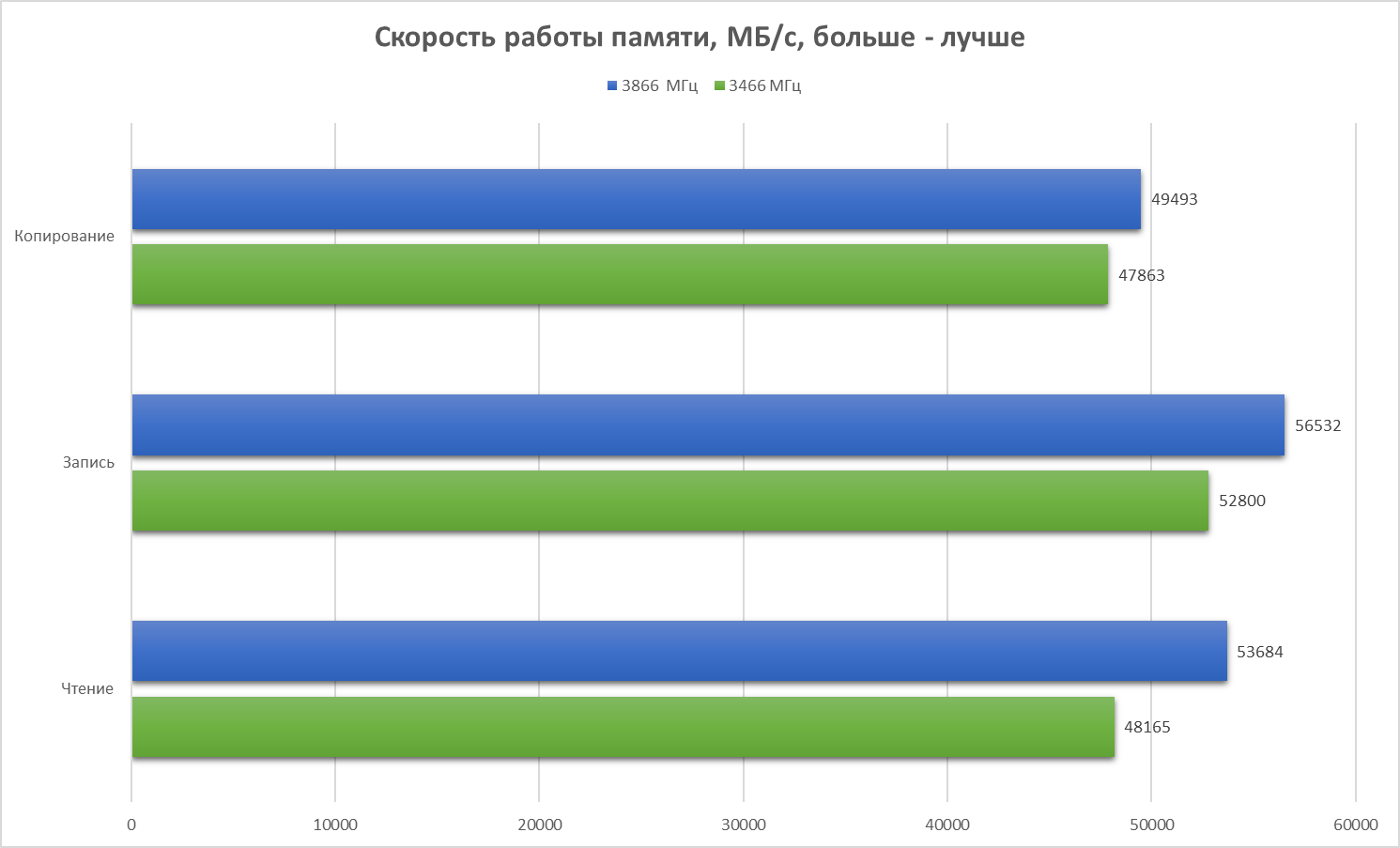
Delay rates have also improved.
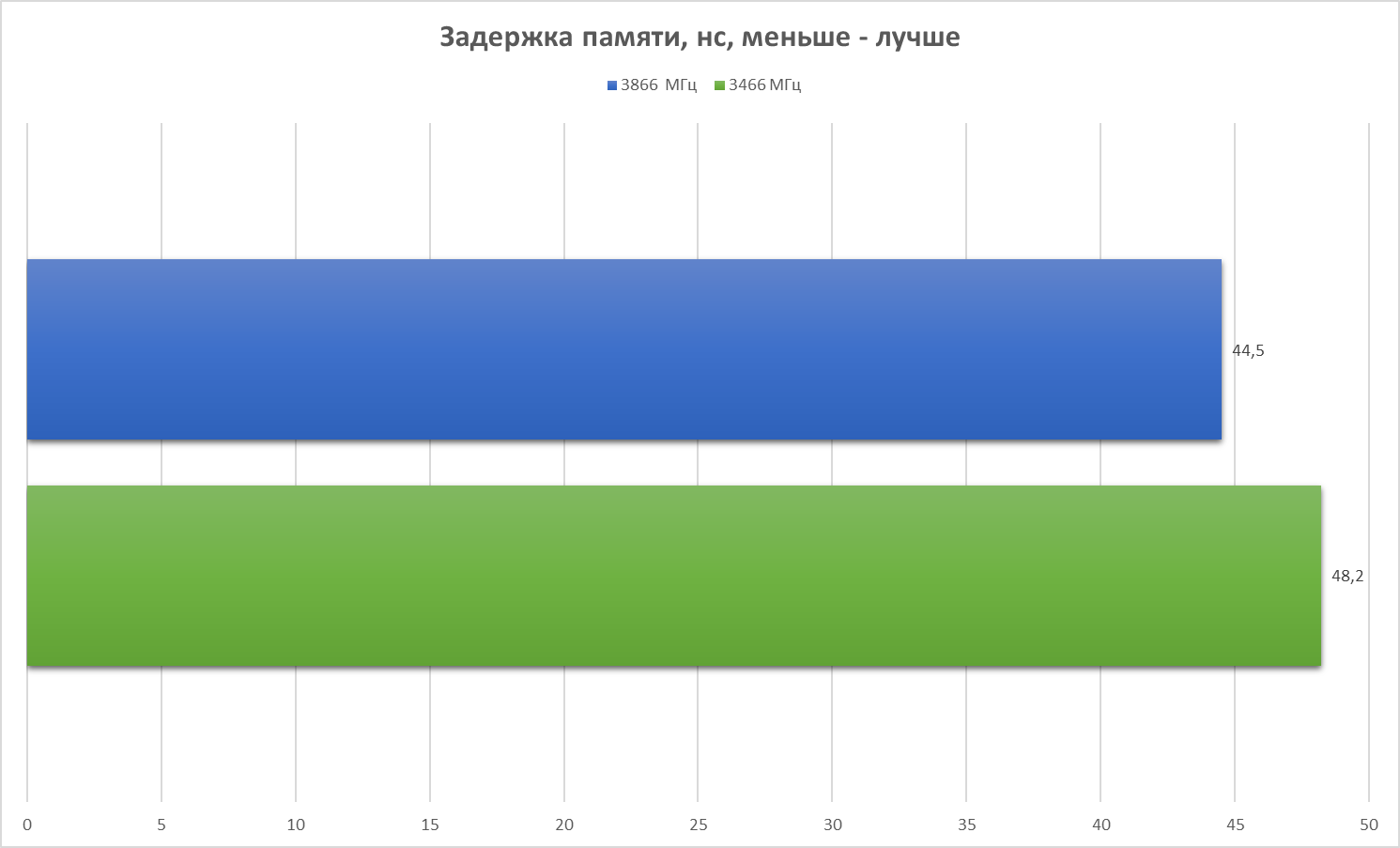
Converting photos began to take place a little faster.

The growth in Adobe Premiere Pro was quite noticeable.

The same can be said about the work of Adobe After Effects.
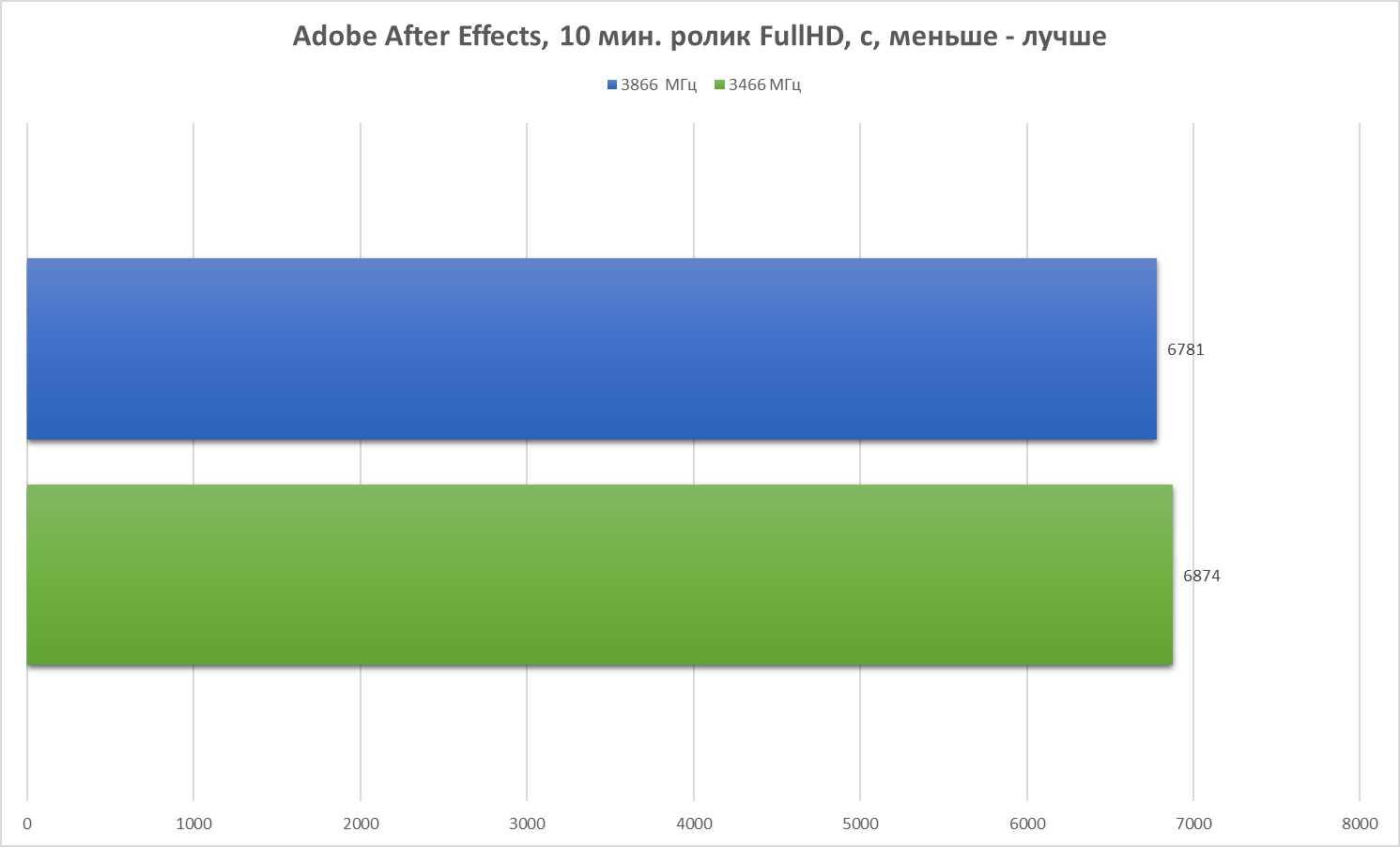
There is no point in talking about Houdini FX - the time savings are enormous.
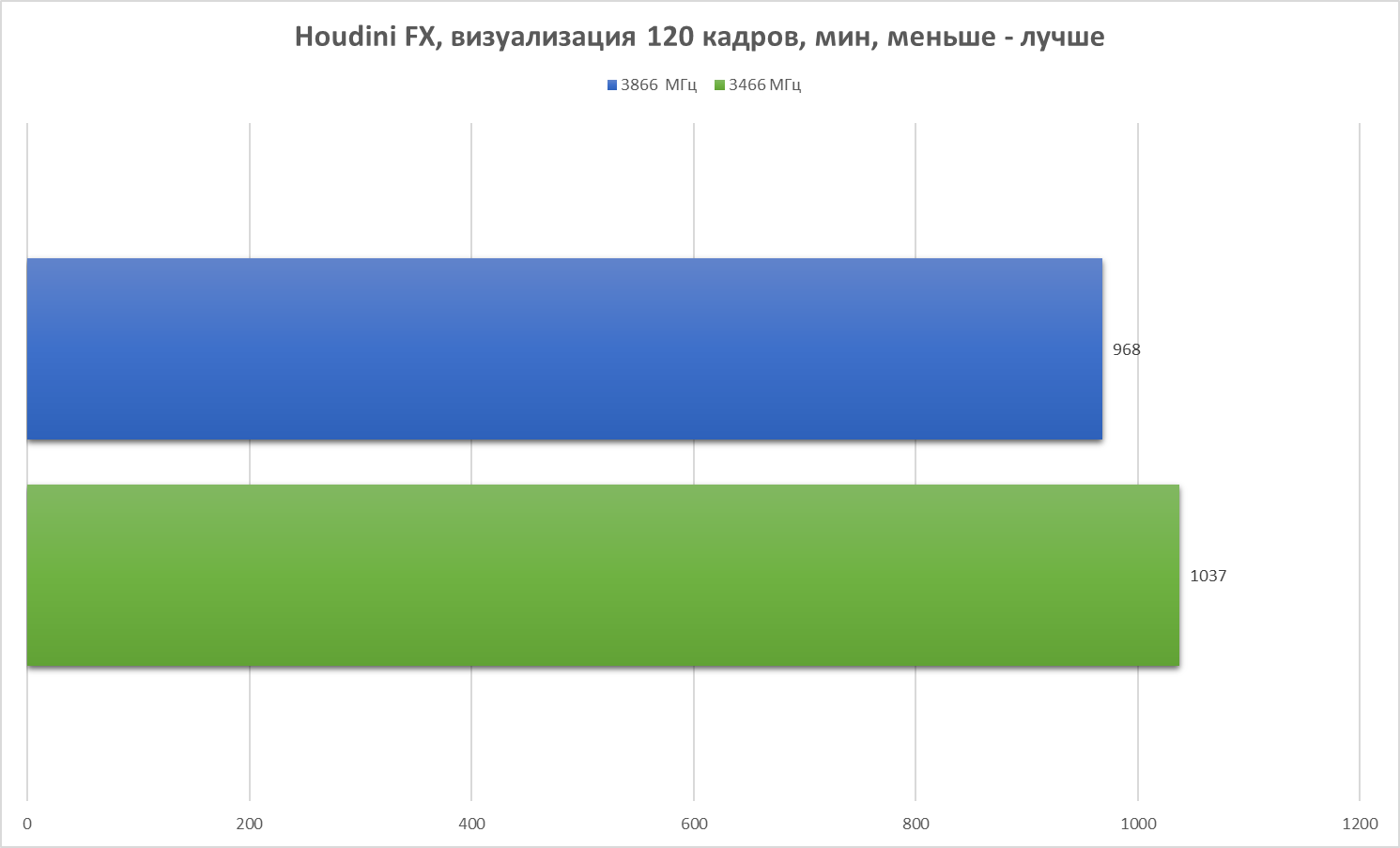
In games, the growth is minimal, but rather, the smoothness increases. But it all depends on the game, of course.
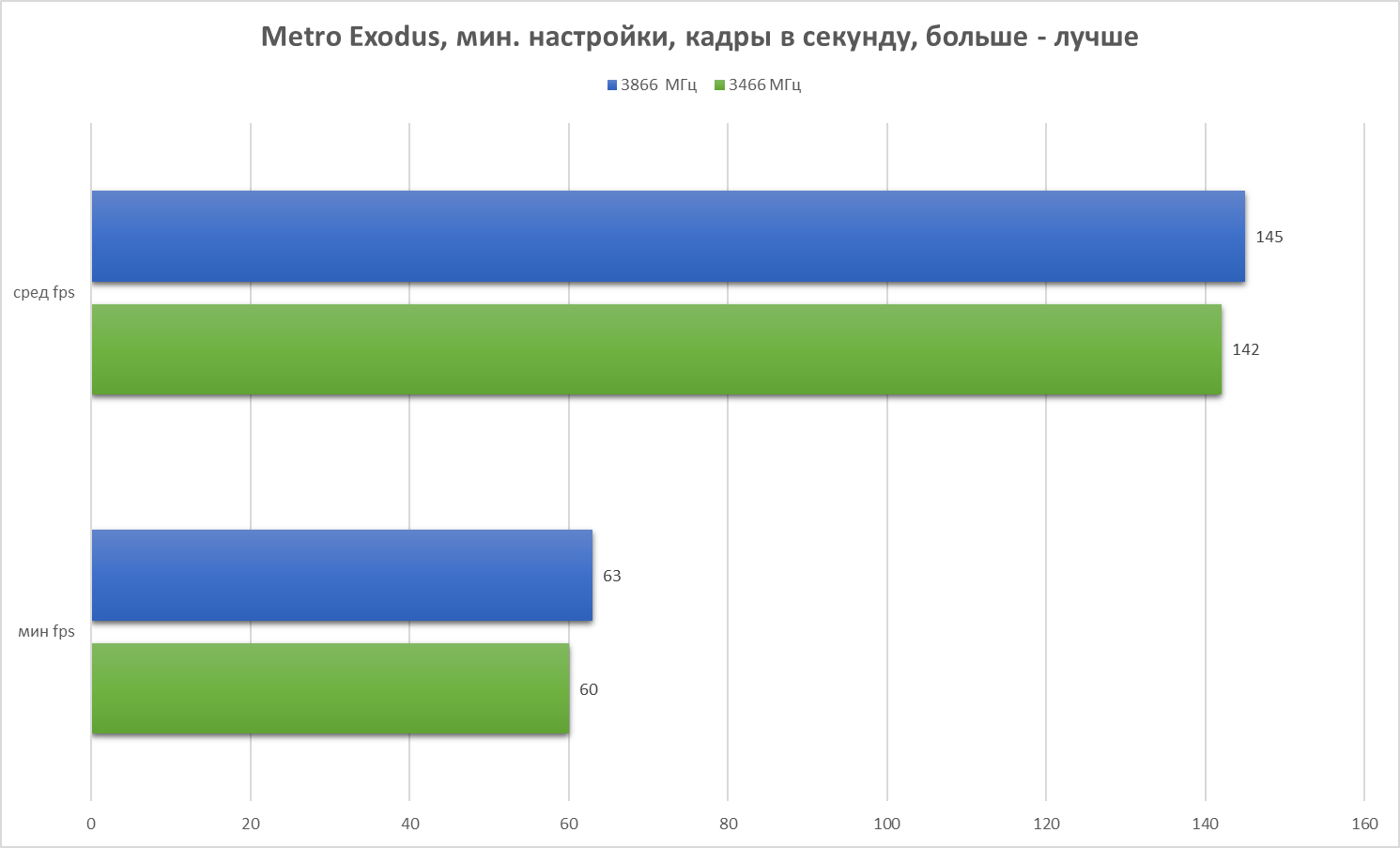
To say that if you build a system on the Intel platform, you don’t have to think much, but you just have to click on the keyboard a few times, it’s not quite right. Yes, tuning the system in terms of processor and memory will be noticeably easier. But a little work will still have to. There is one caveat: if you need to achieve increased performance in real applications, it makes no sense to select each secondary and tertiary timing. This is only necessary if you want to set a record in some popular benchmark, but for this you also need a selective memory. In other words, working with the Intel platform is faster and more convenient than with AMD, although it can cost other money. Although if you look at the price tags of top-end AMD X570 boards ... So what are the special features that await us in the case of Intel? From the point of view of selection of parameters - practically none. Everything is standard in the style of "it doesn’t work - relaxed timings, boosted voltage or reduced frequency." Things are a little different with memory operating at a frequency of over 4200 MHz - here Madame Luck is more likely to help. Such memory requires a successful processor and an advanced motherboard. How was it in the advertisement from which the quote-heading to this piece of material was taken? So in the case of a gaming or working PC - everything should be in moderation. And if something is missing (now we are talking about memory, namely, its clock frequency), then we must definitely try to “twist” it on our own. Thus, we will not only increase productivity (very noticeable in places), but also save some amount of money.
As for the HyperX kits discussed in both materials, they demonstrated not only high performance, but also sufficient configuration flexibility, which allowed them to complete the tasks in less time. If the nominal operating mode of the memory is sufficient for games and most ordinary applications, then for some professional applications overclocking can be highly recommended, because this will significantly speed up the performance of certain tasks!
I summarize two materials at once ... Is there time and no money? Then you can try your luck with AMD. No time and money? Forward to Intel. There are exceptions, but there are very few. And with HyperX memory you won’t lose, no matter which path you choose.
RAM HyperX Fury DDR4 RGB and HyperX Fury DDR4 in Russia are already available for sale. You can get acquainted with the cost in the partner stores on the special product page .
For more information about HyperX products, visit the company's website.

When money shakes a pocket
If any of you has studied the RAM market at least once, you immediately noticed that an increase in the clock frequency of the modules entails a noticeable increase in cost. This is especially evident at frequencies above 4000 MHz, when an extra hundred megahertz can cost more than 5000 rubles. Therefore, only inveterate enthusiasts can afford to purchase kits with frequencies of 4400 MHz and higher. Moreover, there were some pitfalls here.
It was possible to achieve stable operation of high-frequency memory modules on the AMD platform only this year - with the release of Ryzen 3000 processors. And even then there were some features that we spoke about in detail earlier. With Intel processors, everything is much simpler, although there are some nuances. For example, not all motherboards and processors can work with memory clocked at 4400 MHz or higher. Here you need not only an advanced motherboard, but also a selected processor. But up to 4400 MHz, many boards and almost all processors “can”. So Intel’s success formula is simple - money + money + more money and some luck or processor selection.

Pay can not be configured
Everyone decides for himself. But with the Intel platform, handling memory is much simpler - no need to think about the FCLK to memory frequency ratios; you don’t need to study a large amount of memory materials to find suitable modules; do not read dozens and hundreds of pages of forums in order to understand if there are any problems with one or another bundle of memory-board. We already know that in the thoughts of some of you, this material looks like "just spend a lot of money and everything will work." But it is not so. After all, with the Intel platform, no one canceled overclocking of memory. Not only that, it's even easier to do than with AMD. That is, to save on memory, nevertheless, it is possible. But, as in the case with AMD, you need to choose the "right" modules.
Finally, we move on to the study of two new sets of HyperX memory - Fury DDR4 RGB with a capacity of 64 GB and Fury DDR4 with a capacity of 32 GB, which, by the way, are far from the most expensive and even vice versa - one of the most affordable. Yes, these are the same kits that we used when testing with AMD.
HyperX Fury DDR4 RGB memory codenamed HX430C15FB3AK4 / 64 implies four modules with a capacity of 16 GB each with a clock frequency of 3000 MHz and CL15 timings (if fully - 15-17-17-36), operating at a voltage of 1.35 V. This memory is offered in different versions - in the form of separate modules (8 or 16 GB), as well as in the form of sets of two or four modules. The clock frequency varies from 2400 MHz to 3466 MHz, depending on the kit.


The key design feature is not so much the presence of the backlight itself, but its capabilities. These modules support Infrared Sync technology. It is based on a set of infrared sensors located on a printed circuit board on both sides of it near the pads.

If in normal operation the backlight of all modules works absolutely synchronously ...

Then, if you interrupt the connection between them in any way, then synchronization will not work:

As we already said, in our hands is a memory kit with a clock frequency of 3000 MHz. It is based on Hynix's C-die chips. It’s a pity that it’s not B-die, but there is hope for a good overclocking.

Of course, from the first start-up with an activated XMP profile, the system boots correctly.

For several reboots, we determine a reasonable ceiling for this kit - so that there is a safe voltage, adequate timings and stable operation. As a result - 3600 MHz at 16-18-18-36 against the standard 15-17-17-36. You don’t need any calculators or similar research - a simple performance increase is provided immediately. Yes, not everywhere - in games, perhaps, there will be no difference. But in professional applications that actively use RAM, the increase will be immediately noticeable.

Let's start with a simple one - read, write, copy and delay indicators in the AIDA64 integrated benchmark. The results are expected, no surprises.

Although we increased the timings, the clock frequency did its job - the delay decreased slightly.

When converting hundreds of photos from RAW to JPEG using Capture One, the increase is noticeable, although not very large.

Now move on to great professional programs. First, add the grain effect to a 4K movie lasting 10 minutes with Adobe Premiere Pro. Task execution time is indicated in seconds. There is a gain, although not very large.

Some increase in the speed of task execution can be seen in After Effects from the same Adobe - here overclocking the memory allows you to achieve quite noticeable speedup.

But here's where, and in SideFx's Houdini FX, the gain from overclocking is significant. Please note that the numbers are minutes. That is, the result is impressive, isn't it?

As for games, the results can vary greatly depending on the game. Somewhere there will be no difference, somewhere the minimum and average number of frames per second will grow.

And it is time to study the second kit - HX434C16FB3K2 / 32. It implies the presence of two modules with a capacity of 16 GB each with a clock frequency of 3466 MHz and timings CL16 (fully - 16-18-18-36), operating at a voltage of 1.35 V.

This memory is offered in different versions - in the form of separate modules (4, 8 or 16 GB), as well as in the form of sets of two or four modules. The clock frequency varies from 2400 MHz to 3466 MHz, depending on the kit.

The modules of this series are suitable for those users who are alien to modern trends, and who do not want to overpay for something that they will not see. Yes, yes, it's about RGB backlighting. These modules do not have a single LED.

These modules are based on Samsung B-die chips, which overclockers are very fond of.

With the nominal operating mode, of course, no problems have been identified.

As for overclocking, we managed to get 3866 MHz at timings, below the nominal - 16-16-16-32. The result is very pleased. It is possible and more, but it requires an increase in memory voltage above the norm, which is not recommended for continuous use.

Now we will study the performance in both modes of operation. The first test, as in the case of the previous set, is a measurement of the memory speed according to the data of the built-in AIDA64 benchmark.

Delay rates have also improved.

Converting photos began to take place a little faster.

The growth in Adobe Premiere Pro was quite noticeable.

The same can be said about the work of Adobe After Effects.

There is no point in talking about Houdini FX - the time savings are enormous.

In games, the growth is minimal, but rather, the smoothness increases. But it all depends on the game, of course.

Normally, sugar-cream-coffee is the harmony ...
To say that if you build a system on the Intel platform, you don’t have to think much, but you just have to click on the keyboard a few times, it’s not quite right. Yes, tuning the system in terms of processor and memory will be noticeably easier. But a little work will still have to. There is one caveat: if you need to achieve increased performance in real applications, it makes no sense to select each secondary and tertiary timing. This is only necessary if you want to set a record in some popular benchmark, but for this you also need a selective memory. In other words, working with the Intel platform is faster and more convenient than with AMD, although it can cost other money. Although if you look at the price tags of top-end AMD X570 boards ... So what are the special features that await us in the case of Intel? From the point of view of selection of parameters - practically none. Everything is standard in the style of "it doesn’t work - relaxed timings, boosted voltage or reduced frequency." Things are a little different with memory operating at a frequency of over 4200 MHz - here Madame Luck is more likely to help. Such memory requires a successful processor and an advanced motherboard. How was it in the advertisement from which the quote-heading to this piece of material was taken? So in the case of a gaming or working PC - everything should be in moderation. And if something is missing (now we are talking about memory, namely, its clock frequency), then we must definitely try to “twist” it on our own. Thus, we will not only increase productivity (very noticeable in places), but also save some amount of money.
As for the HyperX kits discussed in both materials, they demonstrated not only high performance, but also sufficient configuration flexibility, which allowed them to complete the tasks in less time. If the nominal operating mode of the memory is sufficient for games and most ordinary applications, then for some professional applications overclocking can be highly recommended, because this will significantly speed up the performance of certain tasks!
I summarize two materials at once ... Is there time and no money? Then you can try your luck with AMD. No time and money? Forward to Intel. There are exceptions, but there are very few. And with HyperX memory you won’t lose, no matter which path you choose.
RAM HyperX Fury DDR4 RGB and HyperX Fury DDR4 in Russia are already available for sale. You can get acquainted with the cost in the partner stores on the special product page .
For more information about HyperX products, visit the company's website.
All Articles